How to Spot Hail Damage on Roof?
Important Point
Generally, when assessing hail damage metal roof vulnerabilities, it’s evident that hail damage can have a significant impact on roof covering materials and other properties.
Many homeowners often wonder, ‘how do you know if your roof has hail damage?‘ or ‘what does hail damage look like on a roof?
A hail storm can be very destructive and dangerous.
So, there are some factors to determine the impact of hailstorm damages, which affects the different types of shingles and roofing materials, those are-
1. Wind
In the time of storm, the wind speed varies continuously; so, the direction and speed of wind are continuously changing.
This changing direction of Hail affects the location of roof shingles and other roofing materials.
2. Size and Density
The intensity of the storm is directly proportional to the size and density of the hail; so, if the size of the hailstorm is more, then the damage is also serious.
Hail storms may be very small, or sometimes it is huge.
Hailstorms carry hailstones that do not have smooth edges; so, the impact of those hailstones creates a deep impact on your roof shingles or roofing materials.
3. Building materials
Building materials also play an important role.
Different types of building materials absorb different hail impacts. Due to Hail, dings in gutters, aluminum siding, asphalt shingles have happened.
Wooden shingles or vinyl siding are also badly affected due to Hail because they are not as strong as aluminum.
Hailstones are very dangerous, and small hailstones have enough capacity to damage a roof; so, the longevity of the roof could affect this effect.
Hailstones do not have smooth edges, and they are rough and sharp enough to damage a roofing material easily.
4. Barriers:
Barriers can protect your buildings or your property from dangerous hail damage.
So, barriers like fences, homes near your house, natural barriers like tree covers, landscaping, etc. It can protect you from the hail damage effect.
Also Read: How Are Bridges Built | How Are Bridges Constructed | Factors Associated with Building Bridges
Useful Article for You
- How Much Does a Yard of Concrete Weigh
- How Tall Is a Door
- How Many Stairs in a Flight
- How Many Bags of Concrete in a Yard
- How to Get Burnt Smell Out of Microwave
- How Far Apart Should Fence Posts Be
- How Many People Died Building the Great Wall of China
- How to Draw House
- How to Build a Lean to Roof
- How Many Bags of Concrete for 1 Yard
- What Does Low E Glass Mean
- How Much Does Cinder Block Cost
- How to Get a House for Free
- How Much Does It Cost to Soundproof a Room
- How to Read a Measuring Tape in Meters
- How to Mount a TV on a Brick Wall
- How Many Brick Are in a Cube
- How Is Transported Soil Different from Residual Soil
- How to Use Washers
- How to Get Property for Free
- How Is Tar Made
- How Much Does Gallon of Water Weight?
- How Many Tiles Do I Need?
- Does Concrete Have Lime in It
- How Much Does It Cost to Build a Pergola?
- How Much Does a Concrete Slab Cost?
- How Much Does a Yard of Gravel Weigh?
- How Many Shingles Do I Need for a 24×24 Garage?
- How to Remove Paint from Concrete Without Chemicals
- How to Cover Concrete Walls in Basement
- How to Find Wall load
- How to Build a Cavity Wall
- How Much Does a Heated Driveway Cost
- How Much Spray Foam Do I Need
- How to Get Blood Out of Carpet
- How to Find the Contour Interval
- How to Identify Zero Force Members
- How To Install A Welded Wire Fence
- How to Tell If a Wall Is Load Bearing
- How to Replace Outdoor Faucet
- How to Measure Pipe Size
- How to Build a Pier and Beam Foundation
- How Is Cement Made
- How Much Gravel Is in a Ton
- How to Make a Fence Taller
- How to Get Rid of Sulfur Smell in House
- How Much Does a Gallon of Oil Weigh
- How Many Feet Wide Is a Queen Bed
- How to Use Hydraulic Cement
- How to Find Tributary Area
- How to Calculate Construction Cost Per Square Feet
- How to Build an Outdoor Fireplace Cheap
- How Much Can a 6×6 Post Support
- Sand Chemical Composition
What Is Hail and How Does It Form?
In simple words, Hail can be defined as a crystallized piece of snow.
Many a time, hail is confused with the ice pellets, but that’s often not the case.
Ice pallets are generally solid precipitation of particles less than 5mm, which are generally spherical and circular but rarely conical in shape.
Ice pallets are generally formed as the raindrops fall through the cold air.
The raindrops, as they fall through cold air and clouds, soon lose their temperature and come in Sub-zero temperature.
As they come to Subzero temperature, a thin layer of ice is formed, converting the liquid raindrops.
Many a time, while falling through the air, a fall in temperature might be witnessed, thus again converting the ice pallets into raindrops.
The size of ice pallets is far smaller than the size of Hail, so it does not damage any roofs while falling.
Many times, while falling through, the thin layer of ice is again broken and again reverts back to its original form, that is, liquid rainwater.
Thus it can be said that Hail is generally formed keeping a lot of ice pallets together.
The formation of Hail can be generally witnessed in cold regions. In those regions, and in all other regions as well, the air temperature rises as the height gets increased.
Thus the temperature of the air at a higher place is larger than the temperature of the air at a lower place, keeping the geotechnical coordinates the same.
As per the concept of transpiration, the warmer air gets upward, while the colder air gets downward.
So the process starts from the evaporation of water due to continuous heat.
As the water evaporates from the surface sources, it gets stored up in the lower layer of air, which is, in fact, warmer.
Due to the up drift of warmer air(meaning warmer air gets higher), the rainwater stored in the lower layer of air gets upwards.
As the temperature of the upper air is much below the lower air, the raindrops generally fall below Sub zero temperature and form thin ice.
As the weight of the ice is greater than the raindrop itself, it falls in the lower layer of air. As it falls in the lower layer of air, it generally melts into raindrops again.
As the lower layer of air also consists of moisture; thus the raindrops collect more moisture and turn slightly bigger.
Due to the up drift of air, the raindrops again go into the upper layer of air, falling at a Subzero temperature and again forming ice pallets, which is slightly bigger than before.
As this cycle goes on continuously, the ice pallets become bigger and bigger.
Through this cycle, a time comes when the layer of ice cannot hold the weight of the ice; thus, it falls to the ground.
Hails are generally the pieces of solidified raindrops formed through the cycle of transpiration and evaporation and have a size bigger than 5 millimeters.
6 Signs of Hail Damage on Roof
One of the common questions homeowners have is about the signs of hail damage on their roofs. Hail can damage different roofing materials in varying degrees.
For instance, the effects on wood, asphalt, metal, and slate can differ.
Recognizing hail spatter marks or understanding how to tell if your roof has hail damage is crucial.
These products are getting damaged differently by the hailstorm.
- Hailstorm is the cause of huge damages on wooden shingles by which the shingles get split and sometimes broken.
- Naturally, split shingles have sharp edges and corners. Split in the shingle has been determined in the middle, but no damages at the edges of the shingles.
- Metal shingles get cracked, crushed, or anything other can happen with metal shingles due to hailstorms. The metal coating is also removed, and scouring is observed.
- Slate shingles are getting cracked, totally broken in maximum times, and holes are also created in this type of shingles.
- In asphalt shingles, granules get removed and become shiny in nature. It is also very harmful to the roof itself also. The colors of those shingles also changed.
- Damage signs are also visible in the asphalt shingles due to hail storms.
Hail Damage to Roof Vents and Shingles
Roof vents are almost constructed in every house, and it helps to circulate the airflow in the building and provide a way to enter the sunlight in the building.
Roof vents are generally made with glass, so, due to hailstorms, those glasses are totally damaged, like cracked or totally broken.
This creates a huge loss for the owner.
Shingles are also damaged by hail storms. The damages in shingles are- Hail created a huge impact on the asphalt and composition shingles and turned it into the black in color.
Due to Hail, granules in asphalt get removed and become shiny in nature. It is also very harmful to the roof itself also.
Slate shingles are getting cracked, totally broken in maximum times. Hailstorm is very dangerous for the slate shingles.
What Does Hail Damage Look Like on Shingles Roof?
Hail damage creates different damage impacts in roof shingles. Naturally, roof shingles are made with slate, metal, wooden, etc.
So, the damages on various roof shingles are.
1. Wood Shingles Damage
Wood shingles are easily damaged by hailstorms because they are very weak to resist that kind of storm.
Some effects of hail damage on wood shingles are.
- The wooden shingles will split, which are orange or brown in color.
- Hailstorm creates random damages on wooden shingles.
- Generally, split shingles have sharp edges and corners. Split in the shingle has been determined in the middle, but no damages at the edges of the shingles.
- Damage marks are seen along with the splits, and it also creates impact damages on the roof shingles or roofing materials.
2. Asphalt and Composite Shingles Damage
Generally, asphalt and composite shingles are much harder and stronger than wooden shingles, they can even resist the hailstorm damage more perfectly and accurately, but there is also some damages are observed in asphalt or composition shingles, those are-
Hail created a huge impact on the asphalt and composition shingles and turned it into black in color.
Random damage patterns are visible in the asphalt shingles after the Hail.
Due to Hail, granules in asphalt get removed and become shiny in nature. It is also very harmful to the roof itself also.
Sometimes, Hail does not hit too much harder; it hits smoothly and creates less impact on the roof shingles like asphalt or composition shingles.
3 Metal Shingles Damage
Due to hailstorm, the upper coating of the metal shingles is removed; so, it shows a scouring effect. The roof is pelted because of Hail, and the damage is measured by the speed of air of Hail.
The material gets cracked, crushed, or anything other can happen with metal shingles due to hailstorms.
4. Slate Shingles Damage
By the hailstorm, the slate shingles are getting cracked, totally broken in maximum times. Hailstorm is very dangerous for the slate shingles.
Due to Hail, holes are created in the slate shingles, and it is not usable in maximum time.
Metal Roof Hail Damage
When it comes to hail damage on metal roof shingles, even though they are among the tougher roofing materials, they are not immune to the effects of hail storms.
It’s essential to identify the signs of hail damage and know ‘how do I know if my roof has hail damage?
There are several types of damage that can happen in the metal roof, those are-
- Denting may happen due to hail storm; so, a portion of the panel is dented from the roof, and due to this aesthetic issue will appear, there are no chances of failing by this reason. Someone needs to fix and repair those portions, and the roof is totally ready to repair.
- Due to a hail storm, some random sharp-edged particles hit the metal roof; so, for this reason, a leak is observed in the roof. Puncturing in the metal roof is common after Hail.
- Sometimes, metal shingles are also broken due to this hail storm. It is very dangerous, and it needs proper repair works and maintenance for further use.
Useful Article for You
- What Is a Contour Interval
- What Is Tile
- What Is the Difference Between a Shower Pan and a Shower Base?
- What Is Raft
- What Is a Window Panel
- What Is a Frame Structure
- What Is the Measurement for a Queen Size Bed
- What Is Considered Livable Space
- What Is One Way You Can Save Electricity?
- What Is Mdf Mean
- What Is a Bundle of Shingles
- What Is a Gallon of Water Weigh
- What Is Overhang
- What Is Sand Blasting
- What Is a Span Bridge
- What Is a Soil Stack
- What Is the Little Black Diamond on a Tape Measure
- What Is a Louvered Door
- What Is a Spread Footing
- What Is Leveling
- What Is Retrofitting in Construction
- What Is Pile Cap
What About Hail Spatter?
On the roof, shingles, or other materials, there are painted components or other materials like oxidation materials, dirt, leaves, algae, and grime stored.
A common aftermath of hailstorms is hail spatter marks on siding and other surfaces.
There is a temporary marking is happens after a hail storm, which is termed as Hail spatter.
Hail spatter may damage the roof shingles, or it may not damage the roof shingles; it totally depends on the hailstones.
Hail spatter is a very important thing because it removes the dirt, grime, and other materials & leaves a mark on roof shingles by which we can easily detect the damages on the roof and the size of hailstones, the direction of hailstone and speed of hailstones.
In soft metals, we can easily detect the hail storm damages and the density of hailstones.
So, Hail spatter can damage your roof shingles, but it will also help a lot more; it cleans the roof shingles from algae, dirt, debris, grime, etc.
And by Hail spatter, you can easily detect the hailstones’ density.
What Size Hail Will Damage a Roof?
A frequent query among homeowners is, ‘how do you know if your roof has hail damage?‘ While hail can cause significant damage to roofs, often the extent of damage is less if the hailstones are small, but if the sizes of hailstones are bigger in nature, then it may cause huge damage and a major loss for your roof.
It also costs too much money for repairing purposes.
There are some sizes hail causes roof damages; they are different in size, and different damage property is observed and also create a different impact on your roof.
1. ¼-inch Hail
This is the first size of Hail which is widely known as pea-sized Hail.
In this type of storm, a mild hailstorm can produce this type of Hail, and it stays near for about a few minutes with a steady rainfall.
New roofs are not damaged by this type of hail size, but if your roof is a little bit older, then your roof is getting damaged by this type of hail storm.
2. ½-inch Hail
This is the second size of Hail which is widely known as marble-sized hail.
This type of Hail does not damage your roof directly because wind goes to the upper portion atmosphere, becomes snow, and falls down to the earth due to gravity.
When the extreme wind is blown, then this type of Hail can create damages to your roof, and then the size of the Hail becomes quarter-inch-sized.
3. ¾-inch to 1-inch Hail
This is also another type of Hail which is widely known as a dime to quarter size hail.
If the size of hailstones is greater than ½ inch, then you should immediately call a roof inspector to inspect the roof.
This type of hail size can create a crack in your roof, which is very dangerous, and you should call a roofing contractor.
You should also hire an insuring agent who prepares all the policies and talk with your roofing contractor about the dealing of damage.
4. 1-inch to 4-inch hail
This is the final size of Hail which is also known as gold ball-sized Hail.
This is the uncommon size of Hail which can create huge damage on your roof, home, car, etc.
If this type of Hail is done, then there is damage surely. In this type of situation, you should hire an insurance agent and a roofing contractor to inspect the roof.
After that, the roofing contractor will inspect your roof in detail and find out the damages on your roof and the portion where hail hits, and then start all the necessary repairing works.
This process is also a very cost-effective process; so, you need to calm and find out the best and professional contractor for your roof repairing purpose.
Also Read: Water Damage in Bathroom | How to Fix a Water Damage Bathroom | Signs of Water Damage in Bathroom
What Does Hail Damage Do to a Roof?
Hail damage creates different impacts in different types of materials, like the impact on asphalt and composite shingles are different than wooden shingles.
Generally, shingles of the roof react differently when they are struck by Hail.
So, it is mandatory and important to know about the types and intensity of damage to perfectly detect the damages for restoration and repair of roof shingles.
What Do I Do If I Think I Have Hail Damage?
If you suspect hail damage to metal roof or any other type, and notice that only one or two roof shingles or shakes are punctured or split, they can be removed or replaced.
- When you see or discover the failed damage on your wooden roof, at first, we have to determine how much damage occurs there.
- For this job you can hire a local contractor, he or she can easily handle this problem.
- If you inspect your roof and find that most of the shingles or shakes are damaged, then you have to replace the whole roof.
How Can You Tell If a Roof Has Been Damaged by Hail?
Impact marks or dents along the splits. There are many other types of damage to shingles that can be mistaken for hail damage. For example, exposure to inclement weather and sunlight makes shingles brittle and gives them an aged appearance. This type of damage is normal wear and tear of shingles, which is sometimes misidentified as hail damage.
What Are the Signs of Hail Damage to Asphalt?
If you see exposed substrate, it means that the granules of the asphalt have been knocked off by pieces of hail. The 3 major signs of hail damage include bruising, cracking, and granules missing from shingle. Knowing what to look for in each case will help you identify hail damage.
What Can Be Mistaken for Hail Damage to Shingles?
There are many other types of damage to shingles that can be mistaken for hail damage. For example, exposure to inclement weather and sunlight makes shingles brittle and gives them an aged appearance.
What Kind of Damage Can Hail Cause?
Most hailstones do not have smooth edges, which can impact the type of damage they cause. Building materials – Building materials absorb hail impacts differently. For example, hail can cause dings in aluminum siding, gutters or asphalt shingles, whereas it can crack vinyl siding or wood shakes.
What Are the Signs of Hail Damage to Wood Shingles?
Wood Shingles Hail Damage Random damage with no discernable pattern. A split in the shingle that is brown/orange in color. A split in the shingle that has sharp corners and edges. A split in the shingle that has little to no deterioration at the edges. Impact marks or dents along the splits.
How Does Wind Affect a Hailstorm?
Wind – During a hailstorm, wind direction and wind speed can vary. Changes in wind conditions can affect the location and severity of hail impacts. Size and density – The size of the hailstones can affect the degree of damage, if any, to your property. A hailstone can be as small as a pea, or as large as a softball.
What Kind of Damage Can Hail Do to a Metal Roof?
Here are some examples of hail damage on a metal roof. See all hail damage pictures here. Hail spatter – sometimes called hail splatter – results when “slushy” type hail leaves discolored marks or stains on your roof or appliances like AC units.
Can I Get on My Roof to Check for Hail Damage?
We do not advise you to get on your roof unless you have proper safety gear and relevant roofing or construction experience. If you need professional help to determine whether you have hail damaged on your roof, contact a reputable, local roofing company for a full hail damage roof inspection.
What Does Hail Damage Look Like on Shingles Roof
Hail hits on shingles may show subtle spots of granule displacement, bruises in shingle surface, or holes. If you see any dark spots on uniform shingle surfaces or dimpled areas, you most likely have hail damage.
What Does Hail Damage Look Like on Asphalt Shingles?
Hail hits on shingles may show subtle spots of granule displacement, bruises in shingle surface, or holes. If you see any dark spots on uniform shingle surfaces or dimpled areas, you most likely have hail damage.
Metal Roofs and Hail Damage
It’s a common myth that metal roofing will be dented or compromised by almost any hail event that it comes in contact with. This is completely untrue. In fact, the majority of hailstorms don’t produce hailstones large enough to affect a metal roof at all.
What Does Hail Damage on a Roof Look Like?
More signs of hail damage to your roof are dings/dents/splatter marks to your roof vents, gutters, roof flashing, and other roof penetrations. Your first instinct might be to call a roofing contractor as soon as you suspect roof damage.
What Does a Roof Look Like with Hail Damage?
Hail damage to your roof is either really noticeable or hard to spot. If the hail is large enough (1” in diameter or bigger), you’ll see dents/dings on your shingles. But just because your roof doesn’t have large dents in the shingles doesn’t mean you won’t have hail damage.
What Size Hail Will Damage a Metal Roof?
Maximum hailstone sizes impacting the roofs ranged from 0.75” to 1.75” in diameter. Surface spatter marks were visible where hailstones had removed some of the surface patina of the metal or surface grime and oxidation from the painted surfaces.
Like this post? Share it with your friends!
Suggested Read –
- Earth Dam
- Gravity Dam
- Specific Gravity Test of Bitumen | Procedure of Specific Gravity Test of Bitumen | Result of Specific Gravity Test of Bitumen
- Difference Between Flexible Pavement and Rigid Pavement | What is Pavement | Types of Pavement
- What Are Columns | Types of Rcc Column | Round Column Vs Square Column | Pillar Vs Column
- What Are Construction Cost Estimates | Types of Construction Cost Estimates | Purpose of Preparing a Cost Estimate
- Shotcrete Vs Gunite | What Is Gunite | Advantage & Disadvantage of Guniting Process | What Is Shotcrete | Advantage & Disadvantage of Shotcreting
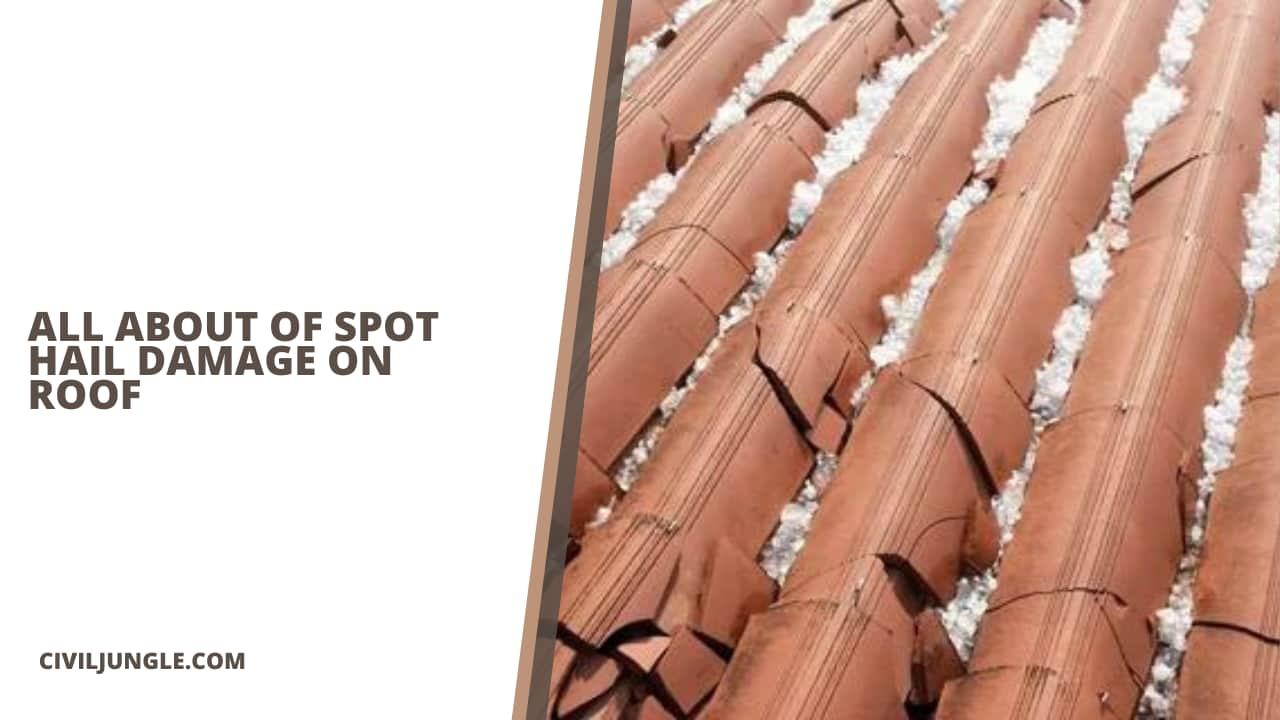
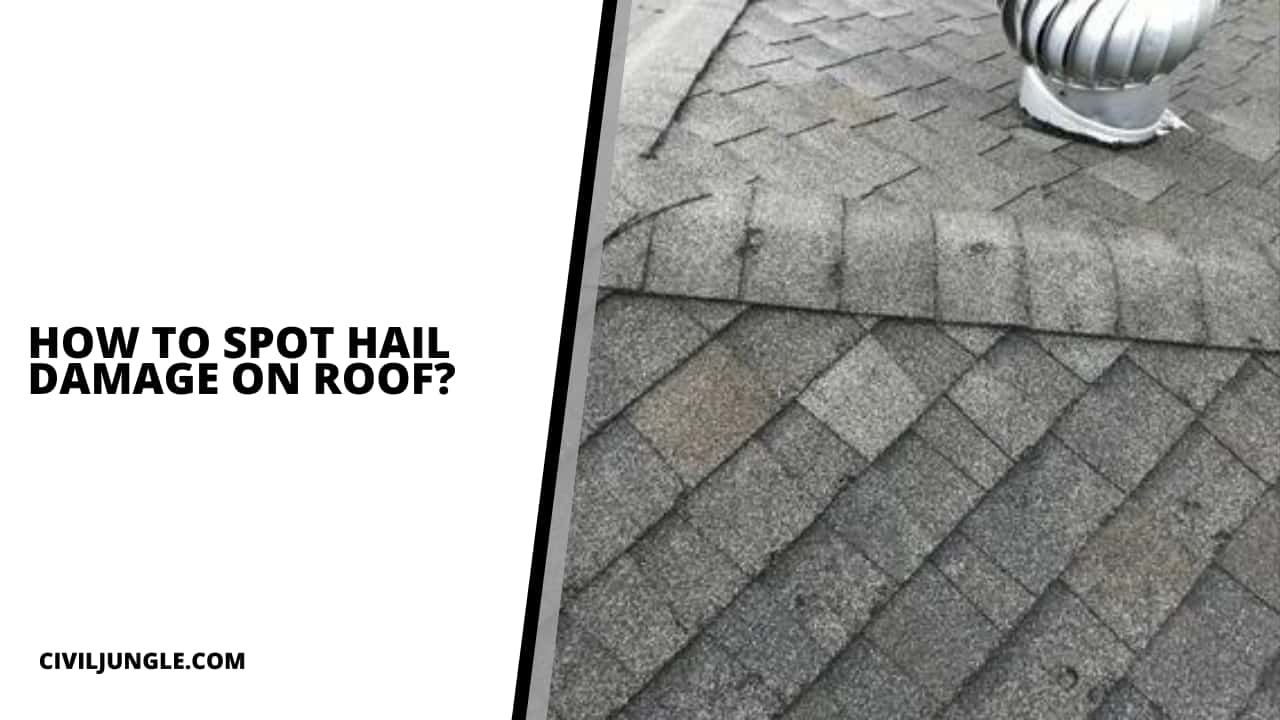
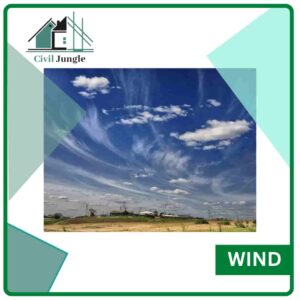
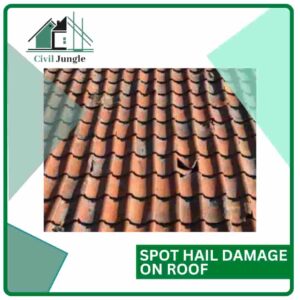
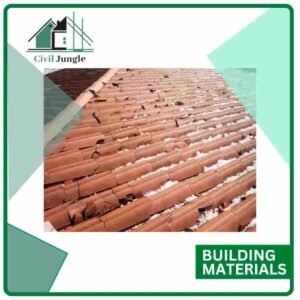
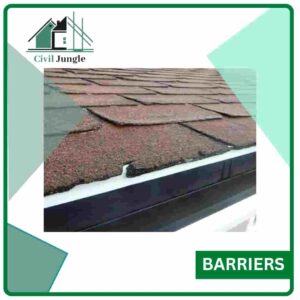
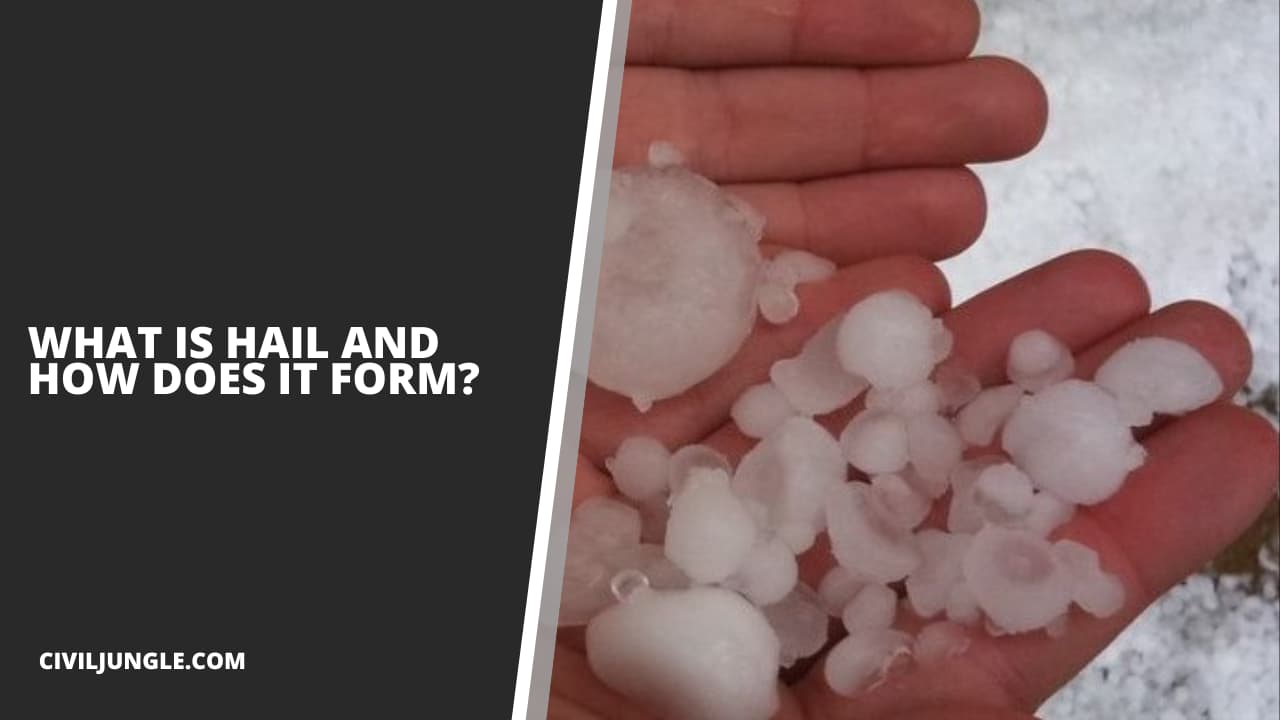


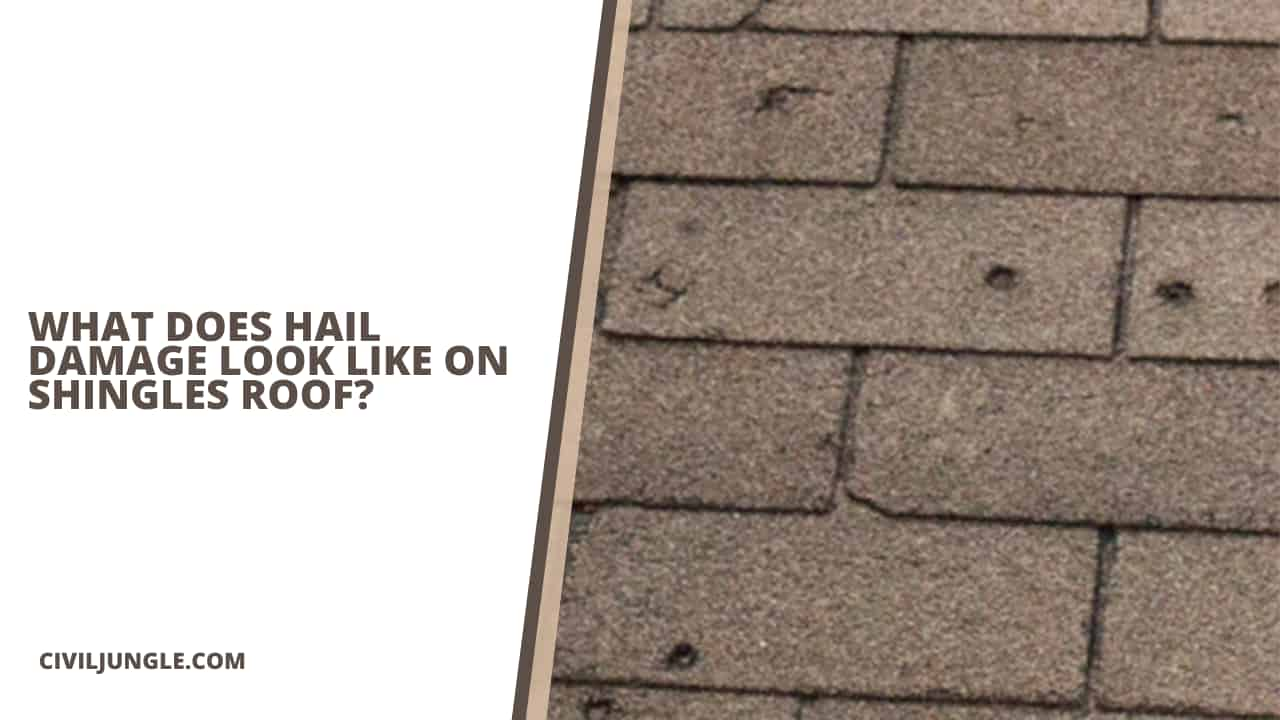
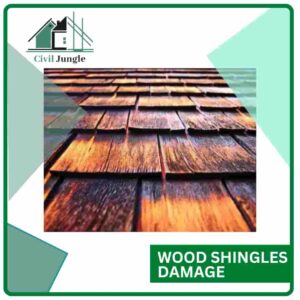
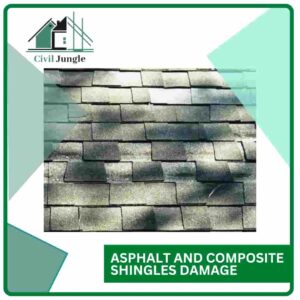



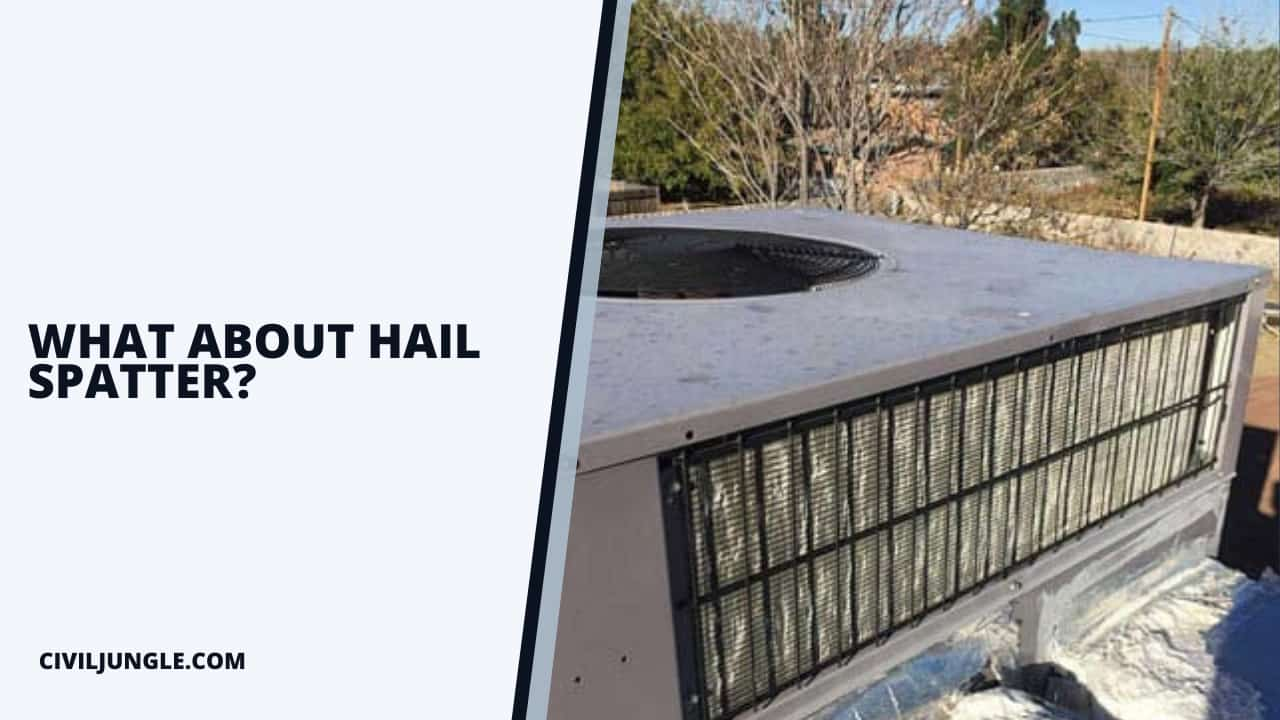
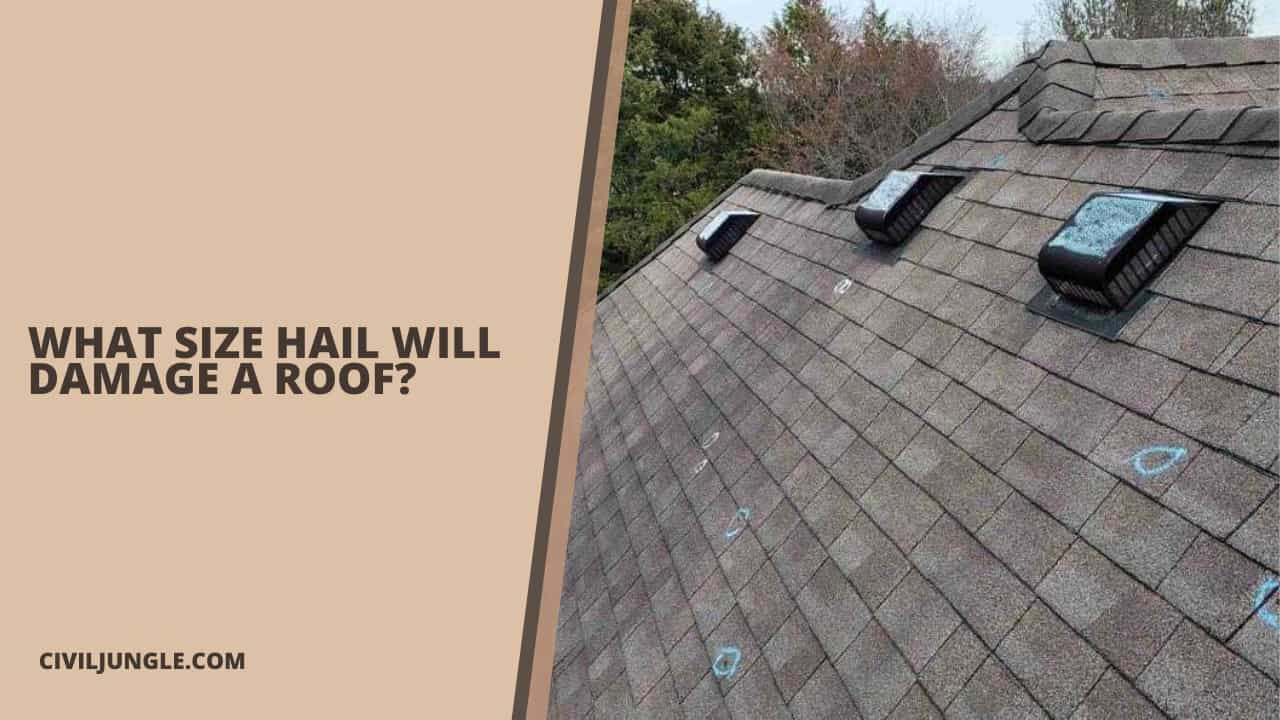
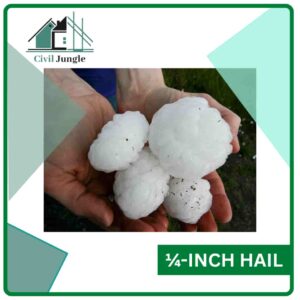
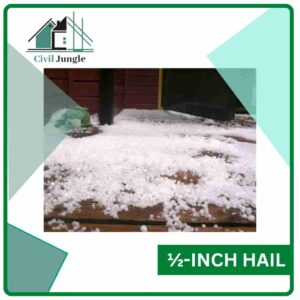
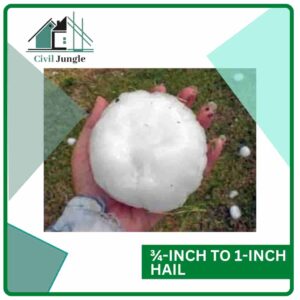

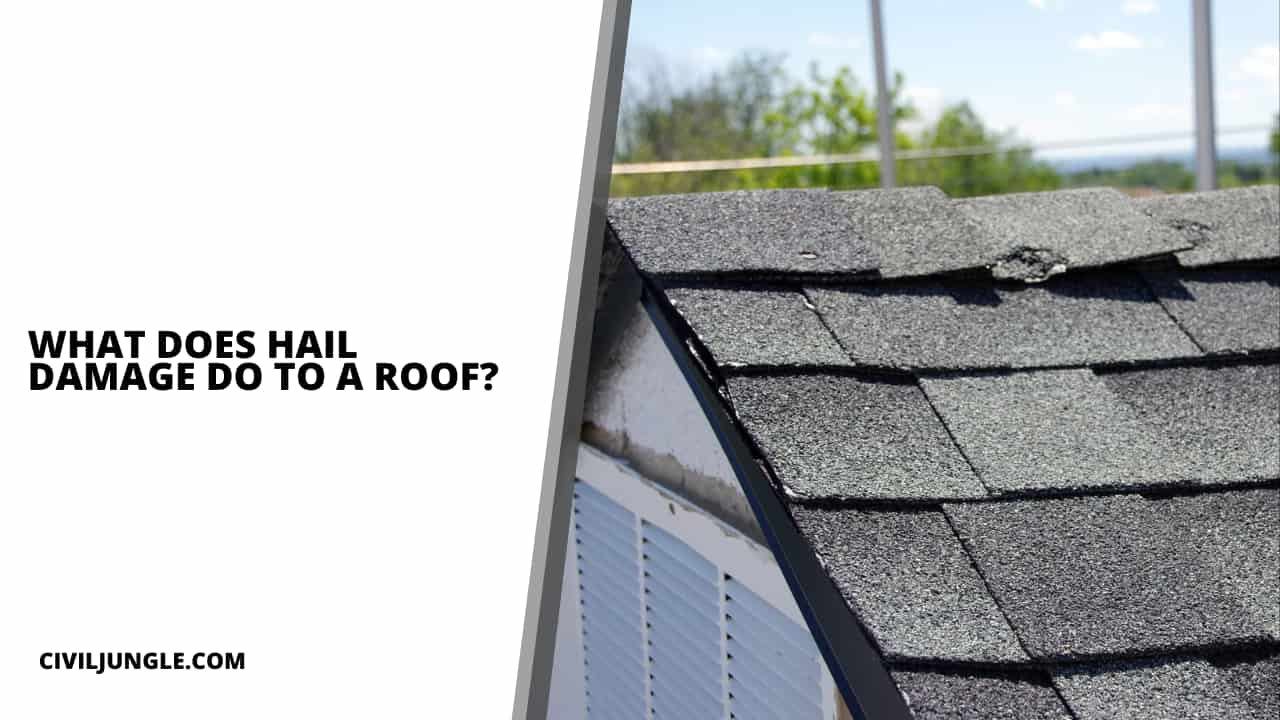
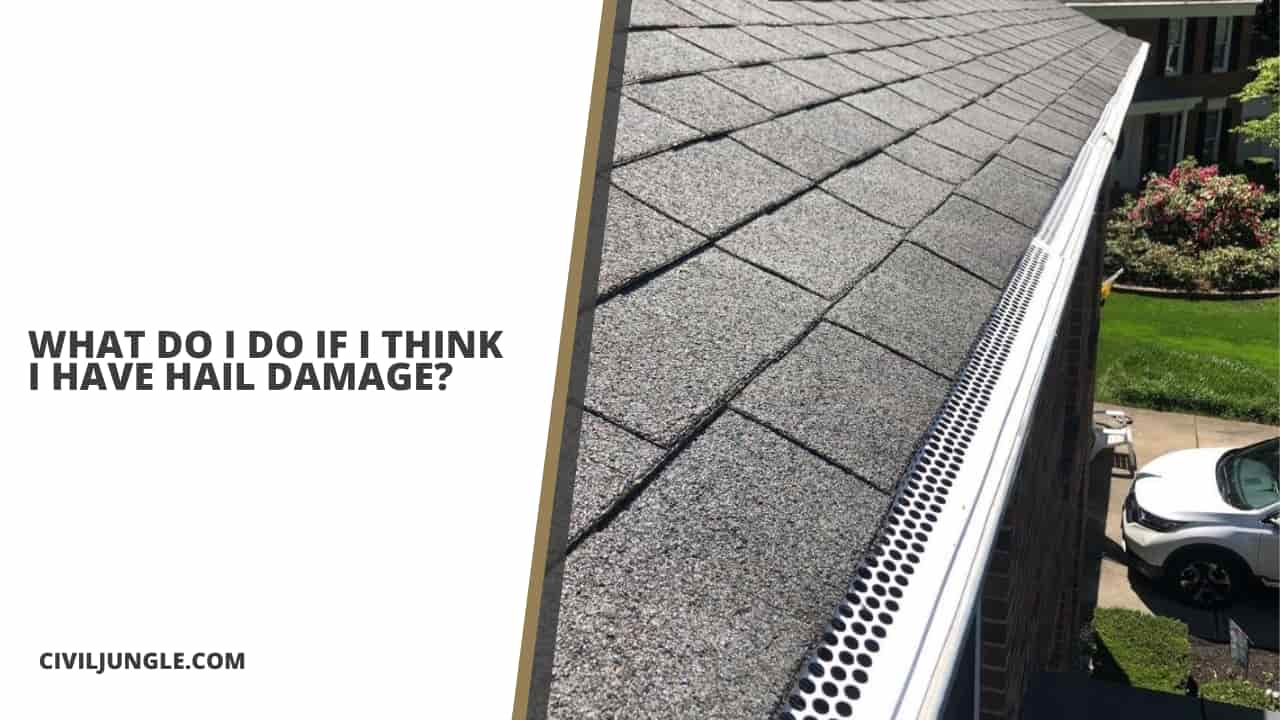

Leave a Reply